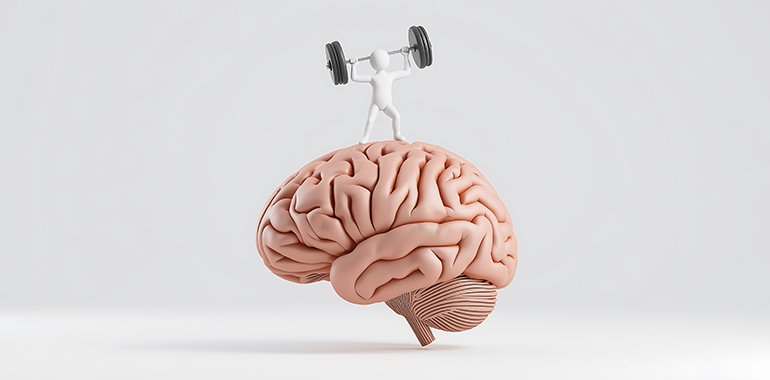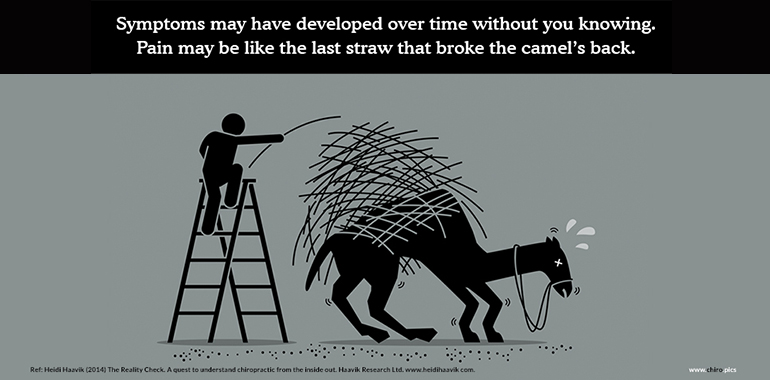How Chiropractic Care Supports Vitality in Your Later Years
Growing older often means slowing down, but it doesn’t mean giving up. Learn what studies are revealing and how care can help you age well.
Healthy ageing focuses on maintaining mental and physical health and avoiding disease so that you can maintain independence and quality of life. Some of the challenges of getting older include memory loss and difficulty in carrying out tasks of daily living such as dressing, bathing, or cooking.
Due to the decline in nervous system function that often accompanies ageing, many older people also experience an increased rate of falls.1 And although getting old may appear like an inevitable downward progression, there is actually something you can do about it – it’s called healthy ageing.

Invest in your Health
Healthy ageing can feel like a big investment in your health, but the returns are rewarding and can restore some control over your health and life. Chiropractic care can support older people with healthy ageing by helping them maintain and improve their overall function.2 3
Why try Chiropractic?
Many research studies have shown that chiropractic care helps the brain become more accurately aware of what is going on inside your body and the world around you.2 4 This is probably why older adults who receive chiropractic care maintain their ability to carry out their activities of daily living, maintain their ability to live independently and look after themselves.3
Chiropractic may help prevent falls in older people
A recent study focused on whether chiropractic care may help older adults improve their function in a way that could decrease their risk of falling.2 This randomised controlled trial compared 12 weeks of chiropractic care to a usual care control in 60 older adults. After 12 weeks the group who received chiropractic care had become better able to know where their ankle joint was when they closed their eyes.
They were able to take a step much faster than the control group, they could simultaneously process visual and auditory information more accurately in their brains, and they also felt better than the control group after 12 weeks of chiropractic care. This means they were better able to control and move their bodies in response to potential hazards which may reduce their risk of falling.

On top of that they felt that their quality of life had improved after the chiropractic care as well.
What is Functional Ability?
Functional ability refers to a person’s ability to carry out basic tasks of everyday life.5 These can be divided into basic activities of daily living, which include bathing, dressing, eating, grooming, transferring, and walking across the room; and instrumental activities of daily living, which include taking medications, using the phone, handling finances, housekeeping, cooking, shopping, and using transportation.1
Due to an age-related decline in physical and cognitive function for many people it can become difficult to carry out these tasks as they get older.3 Slowing the rate of functional decline in older adults preserves their autonomy and well-being and reduces the threat of institutionalisation.3
This is very important for older adults because a loss of independence and functional decline are often associated with frailty and ultimately hospitalisation and mortality.6 Researchers have compared the effects of chiropractic care to standard medical care on health outcomes in over 1,000 older adults with back conditions over a two year period.3
They measured their general health status and tracked their ability to carry out their activities of daily living like bathing, shopping, and cooking.
The people who received chiropractic care maintained their ability to carry out their activities of daily living and self-rated health status over a two year period compared to the people who received medical care.3 This means that the chiropractic group maintained their ability to live independently and maintained their health instead of it declining as it did in the medical group. So the chiropractic group were healthier and better able to look after themselves at the end of the study period.
This may mean that chiropractic care for older adults will result in fewer drugs and less medical intervention and its associated adverse effects.

Keep in mind it’s possible that the people who chose to see chiropractors were fundamentally different to those who didn’t and it’s also possible that other factors, besides the chiropractic care, influenced health outcomes between assessments.
Research also suggests that patients managed by chiropractors compared to those managed medically take fewer drugs, require less surgery, and are less likely to be hospitalised.7 In a study published in 20077 researchers compared seven years of health claims from chiropractors to a similar group of health claims from medical doctors. What they found was a 60% decrease in hospital admissions, 62% decrease in outpatient surgery and procedures, and an 85% reduction in pharmaceutical costs for the patients managed by chiropractors compared to the conventional medicine. This may mean that chiropractic care for older adults results in fewer drugs, less medical intervention and its associated adverse effects.
The research reviewed in this article suggests that chiropractic care slows the decline in functional ability associated with ageing,3 which may reduce the need for potentially harmful medical interventions and drugs.7 It also suggests that chiropractic care enhances sensorimotor function associated with falls risk.2 Chiropractic care can help older people to be more active, more independent, more healthy, and to feel better.2 3
For some older people chiropractic care can truly give them their life back!
References
- Tinetti & Kumar. JAMA 2010;303(3):258-66. doi: 10.1001/jama.2009.2024
- Holt, et al. Effectiveness of Chiropractic Care to Improve Sensorimotor Function Associated With Falls Risk in Older People JMPT 2016 doi: 10.1016/j.jmpt.2016.02.003
- Weigel, et al. JMPT 2014;37(3):143- 54. doi: 10.1016/j.jmpt.2013.12.009
- Haavik & Murphy. JMPT. Feb 2011;34(2):88-97.
- Wiener, et al. J Gerontol 1990;45(6):S229-37.
- Milte & Crotty. Best Pract Res Clin Rheumatol 2014;28(3):395-410. doi: 10.1016/j.berh.2014.07.005
- Sarnat, et al. JMPT 2007;30(4):263-9. doi: 10.1016/j.jmpt.2007.03.004
Chiropractic and Older Adults
With age comes wisdom; but age can also come with problems. Older adults may face memory loss, frailty, falls, arthritis, visceral and metabolic disorders, depression and anxiety, hearing and vision impairments, functional decline – and a host of other problems.
Chiropractic care is an essential cornerstone of healthy aging
Healthy Aging
Chiropractic care is an essential cornerstone of healthy aging. This is because chiropractors are in a unique position to help you maintain and even improve, your overall function, health and quality of life.
Chiropractic Care
Researchers found that people who had received chiropractic care maintained their ability to carry out their daily living activities and had a higher self-rated health status compared to people who received medical care.
References
- Weigel PA, Hockenberry J, Bentler SE, et al. The comparative effect of episodes of chiropractic and medical treatment on the health of older adults. J Manipulative Physiol Ther 2014;37(3):143-54.
- Weigel PA, Hockenberry JM, Wolinsky FD. Chiropractic use in the Medicare population: prevalence, patterns, and associations with 1-year changes in health and satisfaction with care. J Manipulative Physiol Ther 2014;37(8):542-51.
- Holt, K. R., Haavik, H., Lee, A. C. L., Murphy, B., & Elley, C. R. (2016). Effectiveness of chiropractic care to improve sensorimotor function associated with falls risk in older people: a randomized controlled trial. Journal of manipulative and physiological therapeutics, 39(4), 267-278.
Chiropractic Reduces Falls Risk
Every year about one third of older people have a fall. Did you know that many researchers think that chiropractic care can help you maintain balance and prevent you from falling over?
Chiropractic care may help you maintain balance and prevent you from falling over
New Zealand Research Study
A research study showed that after receiving 12 weeks of chiropractic care, the older adults tested on a step test exercise had much improved cognition when stepping up and down. Being able to take a fast step is really important because researchers have shown that people who are quicker at taking a step are less likely to fall.
Healthy Aging
Chiropractic care is an essential cornerstone of healthy aging. By restoring proper spinal function your brain is better able to perceive what’s going on in and around you.
References
- Holt KR. Effectiveness of Chiropractic Care in Improving Sensorimotor Function Associated with Falls Risk in Older People University of Auckland, 2014.
- Holt KR, Haavik H, Lee AC, et al. Effectiveness of Chiropractic Care to Improve Sensorimotor Function Associated With Falls Risk in Older People: A Randomized Controlled Trial. J Manipulative Physiol Ther 2016.
- Weigel PA, Hockenberry J, Bentler SE, et al. The comparative effect of episodes of chiropractic and medical treatment on the health of older adults. J Manipulative Physiol Ther 2014;37(3):143-54.
- Weigel PA, Hockenberry JM, Wolinsky FD. Chiropractic use in the Medicare population: prevalence, patterns, and associations with 1-year changes in health and satisfaction with care. J Manipulative Physiol Ther 2014;37(8):542-51.
Keep Your Spine Moving
Movement has been shown to help people with dementia, depression, and even ADHD. It’s even been shown to change the structure of your brain and improve your concentration and how fast you can think and react.

How your spine moves is very important for keeping your brain healthy
Why a healthy spine is so important
One reason why a healthy spine is so important for your brain is that when one of your spinal segments doesn’t move properly, it changes the way your brain perceives and responds to all other sensory information that enters your nervous system.
References
- Guiney H, Machado L. Benefits of regular aerobic exercise for executive functioning in healthy populations. Psychonomic bulletin & review 2013;20(1):73-86.
- Morres ID, Hatzigeorgiadis A, Stathi A, et al. Aerobic exercise for adult patients with major depressive disorder in mental health services: A systematic review and meta-analysis. Depress Anxiety 2018.
- Tyndall AV, Clark CM, Anderson TJ, et al. Protective Effects of Exercise on Cognition and Brain Health in Older Adults. Exercise and sport sciences reviews 2018;46(4):215-23.
- S J, Arumugam N, Parasher RK. Effect of physical exercises on attention, motor skill and physical fitness in children with attention deficit hyperactivity disorder: a systematic review. Attention deficit and hyperactivity disorders 2018.
- Chaddock-Heyman L, Erickson KI, Holtrop JL, et al. Aerobic fitness is associated with greater white matter integrity in children. Frontiers in human neuroscience 2014;8:584-84.
- Gomes-Osman J, Cabral DF, Morris TP, et al. Exercise for cognitive brain health in aging: A systematic review for an evaluation of dose. Neurology Clinical practice 2018;8(3):257-65.
- Haavik Taylor H, Holt K, Murphy B. Exploring the neuromodulatory effects of the vertebral subluxation and chiropractic care. Chiropr J Aust 2010;40(1):37-44.
- Holt K, Russell D, Cooperstein R, et al. Interexaminer reliability of seated motion palpation in defined spinal regions for the stiffest spinal site using continuous measures analysis Journal of Manipulative and Physiological Therapeutics. J Manip Physiol Ther 2018;IN PRESS.
- Cooperstein R, Haneline M, Young M. Interexaminer reliability of thoracic motion palpation using confidence ratings and continuous analysis. J Chiropr Med 2010;9(3):99-106.
- Cooperstein R, Young M, Haneline M. Interexaminer reliability of cervical motion palpation using continuous measures and rater confidence levels. J Can Chiro Assoc 2013;57(2):156-64.
- Galindez-Ibarbengoetxea X, Setuain I, Andersen LL, et al. Effects of Cervical High-Velocity Low-Amplitude Techniques on Range of Motion, Strength Performance, and Cardiovascular Outcomes: A Review. J Altern Complement Med 2017;23(9):667-75.
- Branney J, Breen AC. Does inter-vertebral range of motion increase after spinal manipulation? A prospective cohort study. Chiropr Man Therap 2014;22:24.
- Kelly DD, Murphy BA, Backhouse DP. Use of a mental rotation reaction-time paradigm to measure the effects of upper cervical adjustments on cortical processing: a pilot study. J Manipulative Physiol Ther 2000;23(4):246-51.
- Holt KR, Haavik H, Lee AC, et al. Effectiveness of Chiropractic Care to Improve Sensorimotor Function Associated With Falls Risk in Older People: A Randomized Controlled Trial. J Manipulative Physiol Ther 2016.
Keep Moving
Did you know that even the ancient Greeks knew that movement and physical exercise was good for your brain? Modern scientists have now shown that movement is one of the keys to promoting a healthy brain.1
Movement has been shown to help people with dementia, depression, and even ADHD.2-4 It’s even been shown to change the structure of your brain and improve your concentration and how fast you can think and react.1 5 6
Why is spinal movement important?
Scientists now know that it’s not just physical exercise that’s important for your brain, but how your spine moves is also very important for keeping your brain healthy. If we look at spinal movement in a very simplistic way, there are really three things we want our spine to be able to do on a regular basis. Sometimes, for example, when we are running, we want our spinal bones to move together in a way that spreads and absorbs the impact forces generated by running. By moving well together, the impact forces are shared equally across the spinal bones, and no damage takes place. But other times, for example when we are lifting heavy objects, we want our spine to stiffen up to protect us. Without all the bones stiffening up like this we could injure ourselves while lifting heavy objects.
So how does our spine sometimes move and sometimes stiffen up?

Well, it’s the brain and central nervous system that does this for us by activating our spinal muscles. The brain activates the correct muscles around the spine and skull in the correct order with perfect timing, to either allow for optimal movement, for example during running or to allow for the spine to stiffen up, for example during heavy lifting. Now there is one more thing we need from our spines, and that is for it to reflexively respond during times we’re experiencing some postural challenges. In these cases, we need our brains to reflexively switch on and off the correct spinal muscles very, very fast so that we can maintain balance and stop ourselves from falling over.
Chiropractic care helps keep your spine moving.
Scientists have shown that chiropractic adjustments can have a big effect on how well your spine moves.7 8 They’ve also shown that chiropractic adjustments can help your brain to process information more quickly, know where your body is in space, and control the way your muscles work.9 10 One potential reason why a healthy spine is so important for your brain is that researchers believe that when one of your spinal segments doesn’t move properly, it changes the way your brain perceives and responds to all other sensory information that enters your nervous system. In other words, spinal function seems to be one factor your brain uses to help process and integrate all of the information from your environment.11
This is why chiropractors are so interested in making sure your spine is functioning properly. They believe that if your spine isn’t moving in a normal or ideal way, it changes the way your brain controls your body.11 New research has recently shown that chiropractors are very good at figuring out which segments in your spine are most restricted or stiff.12-14 They can then adjust your spine using specific spinal adjustments to help restore normal movement patterns in your spine, with the aim of helping your brain to better control your body.

So, if you want to make sure your brain is getting the stimulation it needs to stay healthy, see your chiropractor so they can help you to keep your spine moving as best as it can. And in between your chiropractic adjustments keep your spine moving well by staying active or doing yoga or other stretching exercises.
Remember that if you look after your spine, your brain will love you for it!!
References
- Guiney H, Machado L. Benefits of regular aerobic exercise for executive functioning in healthy populations. Psychonomic bulletin & review 2013;20(1):73-86.
- Morres ID, Hatzigeorgiadis A, Stathi A, et al. Aerobic exercise for adult patients with major depressive disorder in mental health services: A systematic review and meta-analysis. Depress Anxiety 2018.
- Tyndall AV, Clark CM, Anderson TJ, et al. Protective Effects of Exercise on Cognition and Brain Health in Older Adults. Exercise and sport sciences reviews 2018;46(4):215-23.
- S J, Arumugam N, Parasher RK. Effect of physical exercises on attention, motor skill and physical fitness in children with attention deficit hyperactivity disorder: a systematic review. Attention deficit and hyperactivity disorders 2018.
- Chaddock-Heyman L, Erickson KI, Holtrop JL, et al. Aerobic fitness is associated with greater white matter integrity in children. Frontiers in human neuroscience 2014;8:584-84.
- Gomes-Osman J, Cabral DF, Morris TP, et al. Exercise for cognitive brain health in aging: A systematic review for an evaluation of dose. Neurology Clinical practice 2018;8(3):257-65.
- Galin-dez-Ibarbengoetxea X, Setuain I, Andersen LL, et al. Effects of Cervical High-Velocity Low-Amplitude Techniques on Range of Motion, Strength Performance, and Cardiovascular Outcomes: A Review. J Altern Complement Med 2017;23(9):667-75.
- Branney J, Breen AC. Does inter-vertebral range of motion increase after spinal manipulation? A prospective cohort study. Chiropr Man Therap 2014;22:24.
- Kelly DD, Murphy BA, Backhouse DP. Use of a mental rotation reaction-time paradigm to measure the effects of upper cervical adjustments on cortical processing: a pilot study. J Manipulative Physiol Ther 2000;23(4):246-51.
- Holt KR, Haavik H, Lee AC, et al. Effectiveness of Chiropractic Care to Improve Sensorimotor Function Associated With Falls Risk in Older People: A Randomized Controlled Trial. J Manipulative Physiol Ther 2016.
- Haavik Taylor H, Holt K, Murphy B. Exploring the neuromodulatory effects of the vertebral subluxation and chiropractic care. Chiropr J Aust 2010;40(1):37-44.
- Holt K, Russell D, Cooperstein R, et al. Interexaminer reliability of seated motion palpation in defined spinal regions for the stiffest spinal site using continuous measures analysis Journal of Manipulative and Physiological Therapeutics. J Manip Physiol Ther 2018;IN PRESS.
- Cooperstein R, Haneline M, Young M. Interexaminer reliability of thoracic motion palpation using confidence ratings and continuous analysis. J Chiropr Med 2010;9(3):99-106.
- Cooperstein R, Young M, Haneline M. Interexaminer reliability of cervical motion palpation using continuous measures and rater confidence levels. J Can Chiro Assoc 2013;57(2):156-64.
Who sees a Chiropractor?
More and more people will see a chiropractor, but you may be surprised to know exactly why chiropractic care is becoming so much more popular. A recent study found that about 1 in 4 Americans have visited a chiropractor, and almost 20 million Americans see a chiropractor each year.
Chiropractic care helps improve your health and well-being
Why Chiropractic Care?
Although back and neck pain was the main specific health problem people gave for seeing a chiropractor, almost half of the chiropractic patients said they went for general wellness or disease prevention.
Benefits of Chiropractic Care
So why do so many people go to see a chiropractor?
It’s not just because they get a lot of help if they suffer from pain and other health problems. They go because they want to perform better on the sporting field or athletics track. They want to sleep better; they want to deal with stress better and to be better able to relax. They go because they want to improve their overall health and function at their best.
References
- Adams J, Peng W, Cramer H, et al. The Prevalence, Patterns, and Predictors of Chiropractic Use Among US Adults: Results From the 2012 National Health Interview Survey. Spine (Phila Pa 1976). Dec 1 2017;42(23):1810-1816.
How often should you see your chiropractor?
When you first see your chiropractor, you may be among the many people who ask, “how often do I need to come?”. The answer that you may want to hear is once. But chiropractic care, like most things that are really good for us, rarely makes a long-term difference to your health and wellness after just one visit.
Seeing your chiropractor can be a little like going to the gym. It takes time, frequency and follow up to retrain the spine to function well.
Maintenance Care
One reason for having to see a chiropractor regularly is because it usually takes years for the problem to develop which motivates someone to first see a chiropractor and it can take many visits to the chiropractor to correct that problem.
Care Plans
When you go and see your chiropractor know that their recommendations for your plan of care are based on what their clinical experience tells them is best for you and that the research suggests more frequent adjustments have the biggest positive impact on your health and wellness.
References
- Hodges PW, Moseley GL. Pain and motor control of the lumbopelvic region: effect and possible mechanisms. J Electromyogr Kinesiol. 2003;13(4):361-370.
- MacDonald D, Moseley GL, Hodges PW. Why do some patients keep hurting their back? Evidence of ongoing back muscle dysfunction during remission from recurrent back pain. Pain. Apr 2009;142(3):183-188.
- Ferreira ML, Ferreira PH, Hodges PW. Changes in postural activity of the trunk muscles following spinal manipulative therapy Manual Therapy August 2007;12(3):240-248.
- Haas M, Bronfort G, Evans R, et al. Dose-response and efficacy of spinal manipulation for care of cervicogenic headache: a dual-center randomized controlled trial. Spine J. Feb 23 2018.
Visiting a chiropractor
When you first see your chiropractor, you may be among the many people who ask, ‘how often do I need to come?’ Often the answer people want to hear is ‘once’ but chiropractic care, like most things that are really good for us, rarely makes a longterm difference to your health and wellness after just one visit.

One reason a single visit to your chiropractor may not make a long-term change is that it usually takes years for the problem to develop that motivates someone to first see a chiropractor and it can take many visits to the chiropractor to correct that problem.
Seeing your chiropractor can be a little like going to the gym. It takes time, frequency and follow up.
One way of looking at it is that it can be like the thousandth straw that breaks the camel’s back. A problem can build up day after day as you sit hunched over your desk, or bend and twist as you lift, or tense up as you deal with your daily stress and then one day, you bend to tie your shoelaces and all of a sudden something hurts! You can rest assured that tying your shoelaces isn’t what caused the problem, it’s simply the thousandth straw that broke the camel’s back (or was too much for your back) and that’s why you’re in pain.
There will usually be changes to the way the supporting muscles in your spine work that build up over time until your muscles can’t cope anymore and symptoms appear.1-2 So, seeing your chiropractor can be a little like going to the gym. It takes time, frequency, and follow up. Working with you to correct the problem and help your brain and the muscles in your spine communicate or ‘talk’ with each other again so you can regain the stability you need to function properly and resolve your aches and pains.3
But how long will this take and how often do you need to be checked by your chiropractor? Everybody is different, so your chiropractor will be guided by their clinical experience, and what your goals are when they recommend a care plan for you.
US Research Study
A new research study was recently published that suggests, in the early stages of chiropractic care, the more often you get adjusted, the better the results you enjoy, and this can also be better for you in the long term as well.4
In this study, that was conducted by scientists in America, they looked at 256 people who had chronic, regular headaches and divided them into groups who either received chiropractic care once a week, or twice a week, or three times a week, for up to six weeks, or they received no chiropractic care at all and instead were given light massages over the same 6-week period. Previous studies have shown that people with this kind of headache often respond well to chiropractic care.
The scientists in this study were most interested in how many visits per week to the chiropractor showed the best results. They looked at how many days a week a patient suffered from headaches at the end of the study and whether any changes in headache frequency between the groups were still there up to one year later. What they found was that the patients who were seen by their chiropractor most regularly, so up to three times a week, had fewer headaches than those who were seen once or twice a week, and they were much better than the patients who received no chiropractic care at all.
In fact, after one year, the patients that had been seen three times a week had over three fewer headaches per month compared to the patients who only received a light massage. So, these effects obviously lasted.
The more you get adjusted, the better the results that you will enjoy.

This study was done in people with chronic headaches, so we can’t be sure if the same differences occur in people with other problems who see a chiropractor. A similar study in patients with chronic low back pain did find that people who were adjusted more often had the best results, but the results weren’t as clear as the study done on patients with headaches.5
The studies suggest that seeing a chiropractor more often when you begin care has real, beneficial, long-term effects to the way your spine and nervous system works, but how much you benefit may depend on what’s wrong with your spine when you begin care.
So, when you go and see your chiropractor, know that their recommendations for your plan of care are based on what their clinical experience tells them is best for you, and that the research suggests more frequent adjustments has the biggest positive impact on your health and wellness.
References
- Hodges & Moseley. J Electromyogr Kinesiol 2003;13(4):361-70.
- MacDonald et al. Pain 2009;142(3):183-8.
- Ferreira et al. Manual Therapy 2007;12(3):240-48.
- Haas et al. Spine J 2018. 18(10): 1741-1754.
- Haas et al. Spine J 2014;14(7):1106-16.
What is Maintenance Care?
The idea with maintenance care is that regular adjustments will help maintain your spine and nervous system function at its optimal level and help you to be your best and to prevent new episodes of pain developing.
Maintenance care makes perfect sense if you want to function at your best.
Lower Back Injuries
If your brain doesn’t send appropriate protective messages to your core trunk muscles you will have a higher risk of developing low back injuries. A lack of core stability means you’re basically creating mini whiplash injuries to your spine each time you move around or lift your arm or leg.
Spinal Health
It’s really important to keep your spine working well, so if you want to function at your optimal potential consider chiropractic maintenance care because the research suggests your spine will love you for it!
References
- Adams J, Peng W, Cramer H, et al. The Prevalence, Patterns, and Predictors of Chiropractic Use Among US Adults: Results From the 2012 National Health Interview Survey. Spine (Phila Pa 1976) 2017;42(23):1810-16.
- Leboeuf-Yde C, Hestbæk L. Maintenance care in chiropractic – what do we know? Chiropractic & Osteopathy 2008;16:3-3.
- Cholewicki J, Silfies SP, Shah RA, et al. Delayed trunk muscle reflex responses increase the risk of low back injuries. Spine (Phila Pa 1976) 2005;30(23):2614-20.
- Eklund A, Jensen I, Lohela-Karlsson M, et al. The Nordic Maintenance Care program: Effectiveness of chiropractic maintenance care versus symptom-guided treatment for recurrent and persistent low back pain-A pragmatic randomized controlled trial. PLoS One 2018;13(9):e0203029.
Maintenance Care
People go to see a chiropractor for many different reasons.1 Some go because they’re in pain, some go because they want to perform better on the sporting field, and some want to sleep better.
But did you know that almost 50% of chiropractic patients go to their chiropractor because they simply want to maintain their health and well-being?
Do regular adjustments help your Spine?
Maintenance care is when patients go to a chiropractor even when they are not in pain or discomfort. The idea with maintenance care is that regular adjustments will help maintain your spine and nervous system function at its optimal level and help you to be your best and to prevent new episodes of pain from developing.2

What does the research say about maintenance care?
It makes sense to look after your health, so you don’t get sick, right? And that often you get sick because you have been pushing yourself too hard and you’ve become run down? The research tells us that your spine can get run down too, long before you feel pain. We know that if your brain doesn’t send appropriate protective messages to your core trunk muscles, you will have a higher risk of developing lower back injuries.3 This makes sense because a lack of core stability means you’re creating mini whiplash injuries to your spine each time you move around or lift your arm or leg.
If you end up in pain after bending down to tie your shoelaces your pain hasn’t just come out of the blue, it’s usually been developing for some time without you knowing about it. It’s often the thousandth straw that breaks the camel’s back.

All of life’s stressors can build up and impact the way your brain is communicating with your trunk muscles and then all that is needed is one last minor thing to go wrong, and you end up with pain. The goal of maintenance care is to help take the straws off your camels back before they cause symptoms or have a big impact on your life. So, the research tells us that chiropractic maintenance care makes perfect sense.
Swedish Research Study
A study published by researchers from Sweden in 20184 showed the benefits of maintenance care in a group of people who suffered from low back pain. In this study, the researchers followed 328 patients with low back pain who went to 40 different Swedish chiropractic clinics. If the patients responded well when they were first adjusted, they joined the study and received chiropractic maintenance care over the next year of symptom-guided care. The maintenance care patients were seen every 1 to 3 months with the intention being that they were checked before substantial pain reoccurred. Patients in the control group were told to call if and when pain recurred.

They were then adjusted until they got better, and they were told to call again if the pain returned. What the researchers were most interested in was the number of days of bothersome back pain suffered by each group throughout the 1-year trial period.
What they found was that the maintenance care group experienced 13 fewer days of pain over the course of the study on average compared to the symptom-guided group. The amazing thing from this study was that the maintenance care group needed less than 2 extra visits to their chiropractor over the course of a year to have 13 fewer days of pain. This suggests that patients who have had low back pain, and who respond well to care, should see their chiropractor regularly, irrespective of whether their symptoms have returned or not. This study did have some limitations of course. One limitation was that chiropractors were told not to schedule their maintenance care patients more frequently than once a month. So some patients in this group may have benefited even more if the chiropractors had been able to schedule their visits more frequently if they thought that was a good idea.
This study shows that it’s important to keep your spine working well, even if you don’t have pain or symptoms.
So, if you want to function at your optimal potential consider chiropractic maintenance care because the research suggests your spine will love you for it!
References
- Adams J, et al. Spine (Phila Pa 1976) 2017;42(23):1810-16.
- Leboeuf-Yde C, Hestbæk L. Chiropractic & Osteopathy 2008;16:3-3.
- Cholewicki J, et al. Spine (Phila Pa 1976) 2005;30(23):2614-20.
- Eklund, et al. PLoS One 2018;13(9):e0203029.
How Chiropractic Care Supports Vitality in Your Later Years
Growing older often means slowing down, but it doesn’t mean giving up. Learn what studies are revealing and how care can help you age well.

